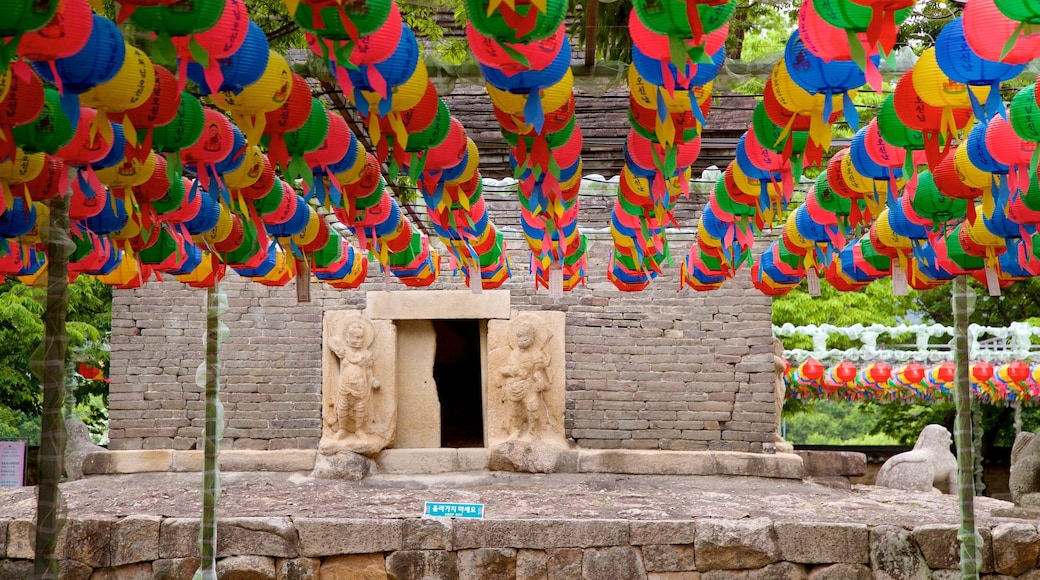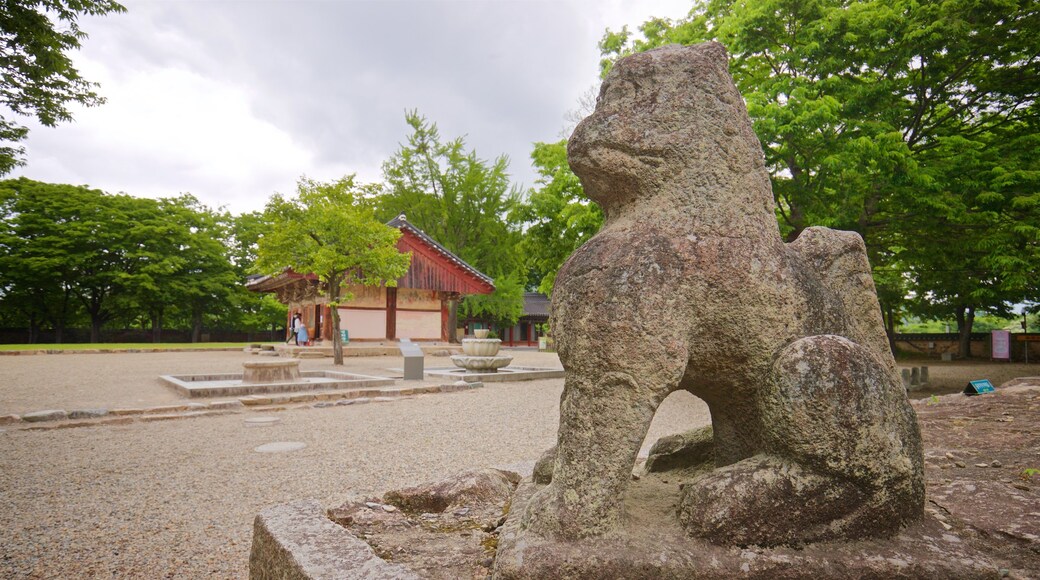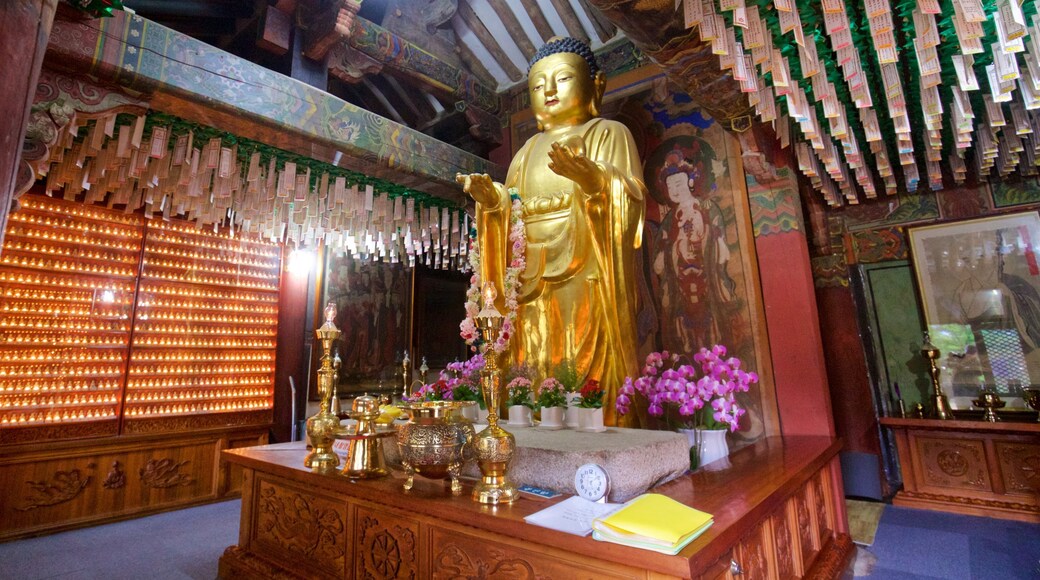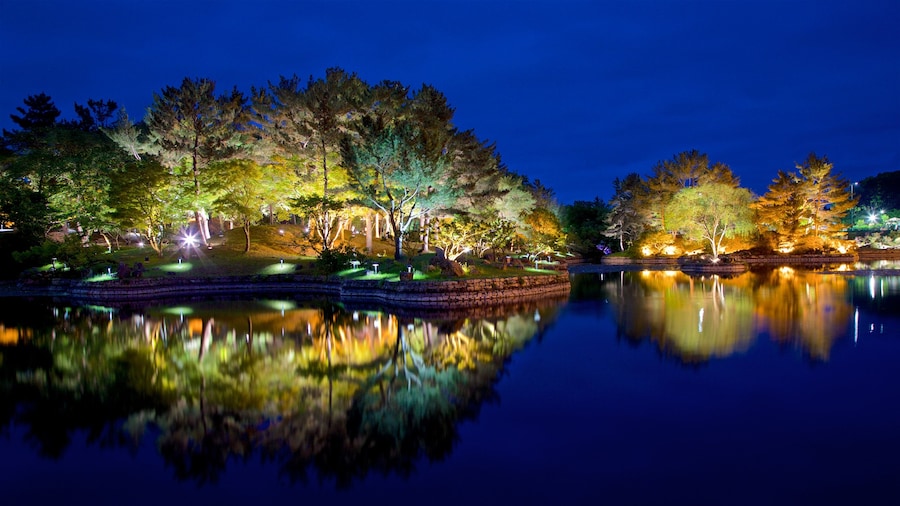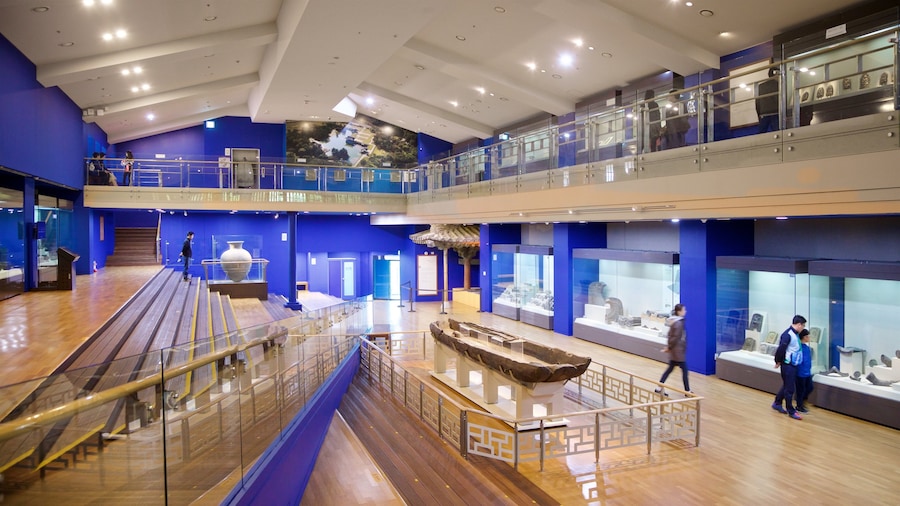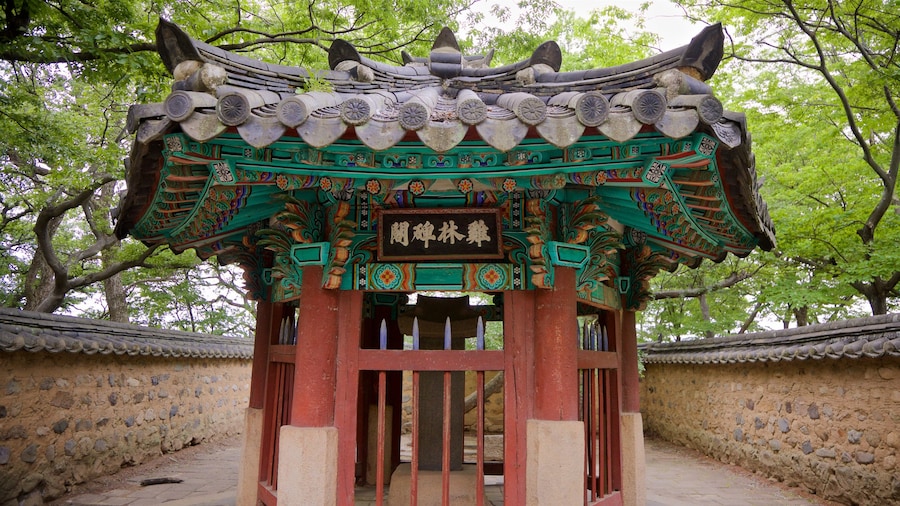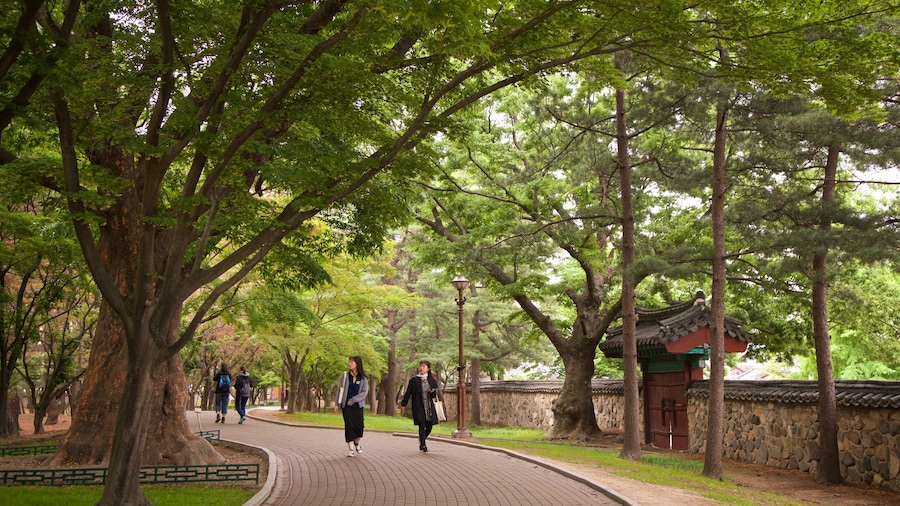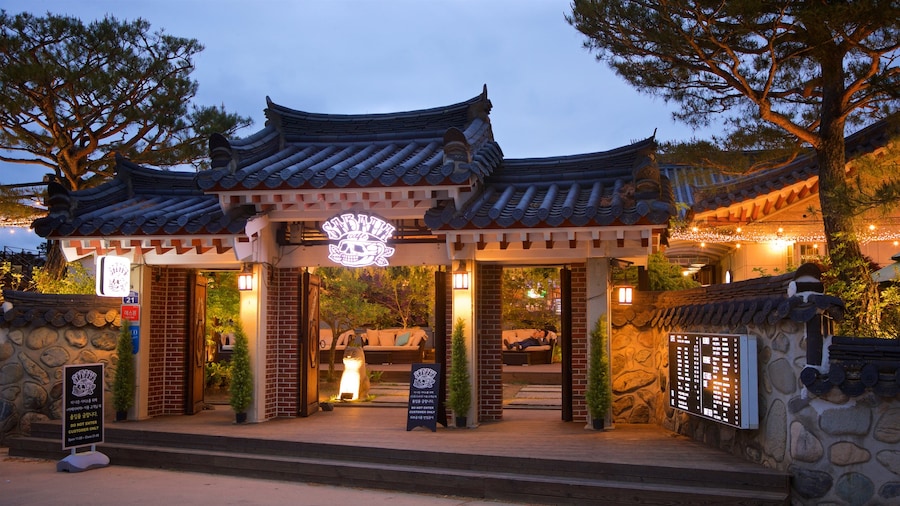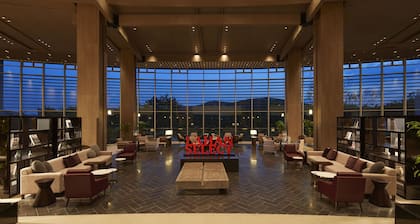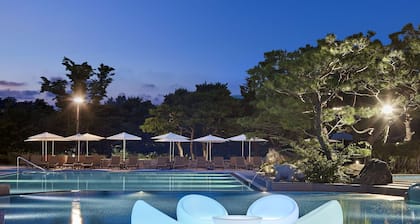Bunhwang-sa is a lasting treasure of the early Silla Dynasty. In Sino-Korean “-sa” means "temple" and Bunhwang-sa was one of Korea’s main Buddhist sites. It was constructed during the reign of Queen Seondeok so that the monks could pray there for the success of her kingdom.
Start your tour at the pagoda, the highlight of the Bunhwang-sa complex. The pagoda dates back to A.D. 634, making it one of the oldest in the country. It’s classed as a National Treasure and an important relic of the early days for Buddhism in Korea.
The sturdy pagoda once had nine tiers, but only three levels remain today. Admire the ancient bricks and stone figures, including guards at each entrance and crumbling lions at the pagoda’s base.
The guards are called Geumgang-yeoksa (Mighty Diamond Men) and while the pagoda’s stone doors stand slightly ajar, they are there to ensure that no evil spirits can enter. A 1915 excavation of the partly collapsed pagoda led to the discovery of the cremated remains of a monk.
For a small fee you can ring the giant bell, housed in its own pavilion. The big wooden drum next to the bell is shaped like a giant fish with a gaping mouth.
Cross the courtyard to the worship hall, where a gilded Buddha statue takes center stage. Don’t miss the fading paintings on the hall’s exterior. If you look closely, you can see the depictions of three Buddhas, monarchs on horseback and a temple courtyard from the Joseon Dynasty.
The Bunhwang-sa complex is open to visitors every day during daylight hours. There is a small admission fee. Be aware that it is not a public space of worship, but monks do still live and pray here, so wear appropriate clothing and enter in silence if you see them in the worship hall.
If you have time to spare, it’s nice to combine your visit with a trip to the nearby Hwangnyong-sa.

